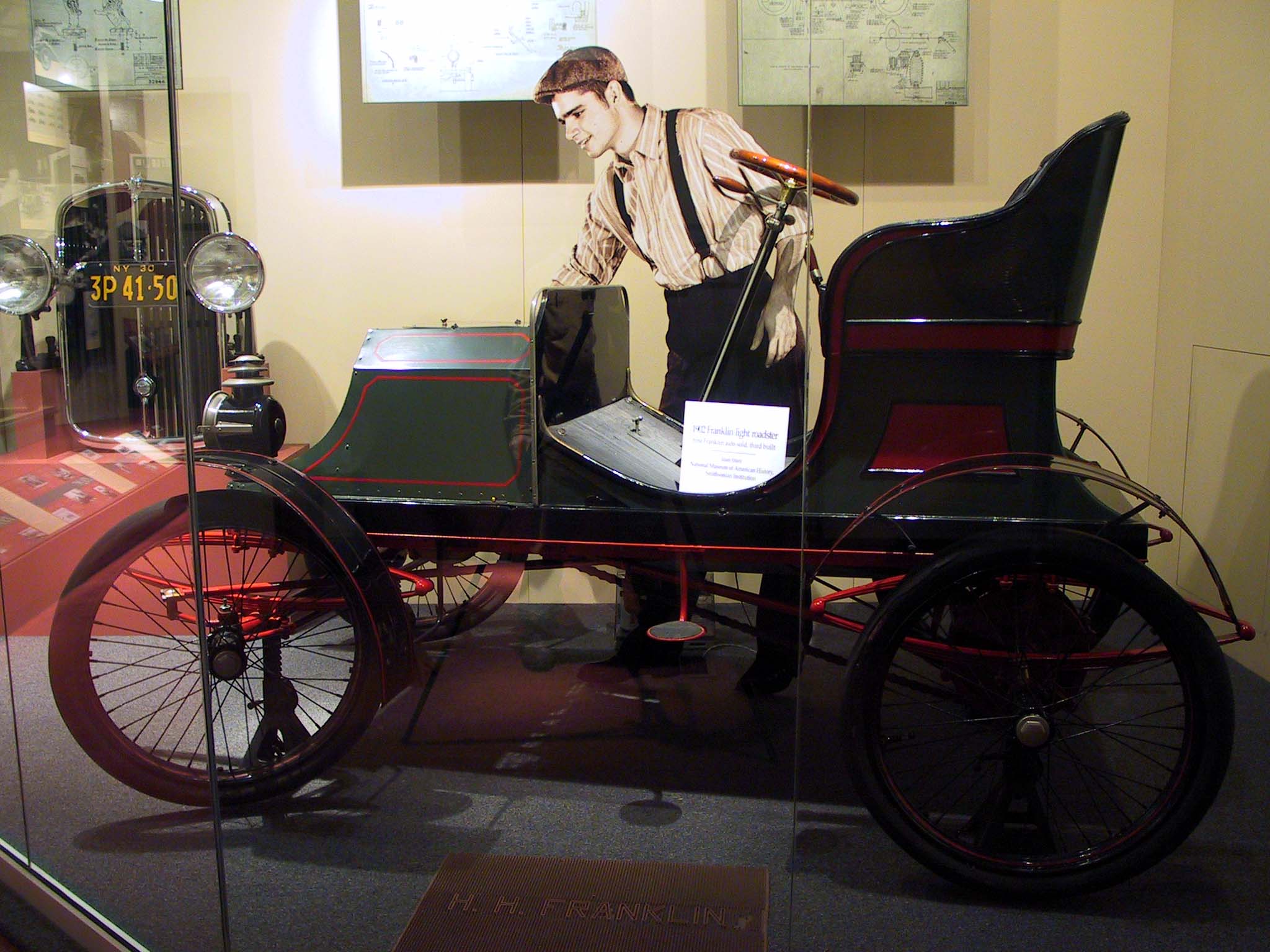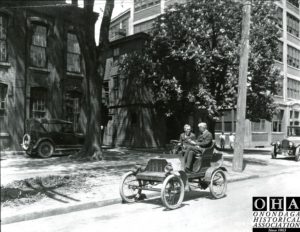
 On Nov. 17, 1998, a 1902 Franklin light roadster arrived at the Onondaga Historical Museum (OHM) on long-term loan from the Smithsonian Institution.
On Nov. 17, 1998, a 1902 Franklin light roadster arrived at the Onondaga Historical Museum (OHM) on long-term loan from the Smithsonian Institution.
It was the first Franklin automobile ever sold and the third one built. An environment controlled setting was provided at OHA through an air-conditioned exhibit enclosure installed by the Carrier Corporation.
The automobile seen in this 1922 photo (left) is the same vehicle on display behind the glass wall at the OHM.
In this picture, S. Gilbert Averill (seated behind steering wheel) discusses the merits of the car with its inventor and chief engineer, John Wilkinson. Averill bought the roadster in 1902.
The car was re-acquired by the Franklin Manufacturing Company in 1916 as a showpiece and returned to the Syracuse factory. It is seen here parked on South Geddes Street. The brick building on the left was the Lipe Machine Shop, where parts for the car were made. The middle building housed Wilkinson’s office when he was designing the car. Both still stand. After the company went bankrupt in 1934, the auto was purchased by the Smithsonian Institution as a significant artifact in American automobile history. This early automobile is still available for viewing at OHA during regular museum hours, 10 a.m. to 4 p.m. Wednesday through Friday and from 11 a.m. to 4 p.m. Saturday and Sunday.
More about the Franklin Auto Company, via H.H. Franklin Club
“The Franklin motor car was invented by the engineer John Wilkinson and manufactured by the industrialist H. H. Franklin and marked under his name. The Franklin was one of the most innovative motor cars of its time, featuring an air-cooled engine, scientific light weight and flexible construction at a time when other luxury car manufacturers were making ponderous machines. Although it was a luxury car, its unique features made the Franklin a pleasant and easy car to operate, and consequently most Franklins were owner driven. The company always featured many body styles, both factory and custom-made, which were conducive to being owner driven. The Franklin’s design allowed it to set many records in point-to-point races which revealed its superior nimble handling, durability, economy and speed over the rough roads of the day. Throughout its history Franklin was a luxury car and it was in this part of the automotive market that it competed with the other notable makes of the day. As such it fell victim to the Great Depression along with many of these same fine luxury car manufacturers.”

